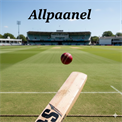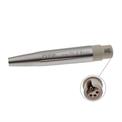
In the world of theatre and film, authenticity is everything. When it comes to scenes involving firearms, having the right equipment is crucial for ensuring safety and realism. This guide will walk you through the essential components of a theatrical firearms toolkit, providing you with the knowledge to enhance your performances and maintain a safe set environment.
The Importance of a Theatrical Firearms Toolkit
Before diving into the specific tools, let's discuss why a comprehensive firearms toolkit is essential for actors. The primary reasons are safety, realism, and efficiency. A well-equipped toolkit ensures that actors are prepared for any scenario involving firearms, reducing the risk of accidents and enhancing the believability of their performances.
Safety Gear: The Foundation of Any Toolkit
Safety should always be the top priority when dealing with firearms on set. The following safety gear is essential for protecting actors, crew members, and everyone involved in the production.
Protective Eyewear
Protective eyewear is a must-have for any scene involving firearms. It shields the eyes from debris and the potential discharge of particles when firing blanks. This simple piece of equipment can prevent serious injuries.
Hearing Protection
Firearms, even when firing blanks, can be loud and damaging to hearing. Earplugs or earmuffs are essential to protect actors' hearing during rehearsals and performances. It's important to choose hearing protection that is comfortable and effective.
Gloves
Wearing gloves can provide extra grip and protect the hands from potential burns or injuries when handling firearms. They are particularly useful during intensive training sessions and action-packed scenes.
Realistic Props: Bringing Authenticity to Performances
Realism is key in making firearm scenes believable. Using realistic props can significantly enhance the authenticity of a performance. Here are some essential prop items to include in your toolkit.
Replica Firearms
Replica firearms are non-functional weapons that closely resemble real guns. They are used during rehearsals and scenes where firing is not required. These replicas help actors get comfortable with handling firearms without the risk associated with live weapons.
Blank-Firing Guns
Blank-firing guns are designed to fire blank cartridges, creating the sound and effect of a real gunshot without discharging a projectile. These guns are crucial for adding realism to scenes that require the firing of a weapon.
Dummy Rounds
Dummy rounds are non-functional cartridges that can be used for training and rehearsal purposes. They help actors practice loading and unloading firearms safely, adding to the realism without any risk.
Training Tools: Enhancing Skills and Confidence
Proper training is essential for any actor who will be handling firearms on set. The following training tools can help actors develop the skills and confidence needed for realistic performances.
Training Firearms
Training firearms are specially designed for practice. They are often weighted to mimic real guns and may have features that allow for safe dry firing. These tools are invaluable for actors to practice handling and firing techniques.
Firearms Training Courses
Investing in professional training is crucial. Attending a theatrical firearms training academy provides actors with expert guidance and hands-on experience. These courses cover everything from basic safety protocols to advanced tactical maneuvers.
Interactive Simulators
Interactive simulators use technology to create realistic training scenarios. These tools can help actors practice their reactions and decision-making skills in a safe, controlled environment.
Accessories: Supporting Equipment for Effective Training and Performance
In addition to the main components, several accessories can enhance the effectiveness of firearms training and performance. Here are some essential items to consider.
Holsters and Belts
Holsters and belts are crucial for scenes that involve drawing or holstering firearms. Using the right equipment ensures that these actions look smooth and natural, contributing to the overall realism of the performance.
Cleaning Kits
Maintaining firearms, even replicas, is important to ensure they function properly and safely. A cleaning kit should be part of any theatrical firearms toolkit, allowing actors to keep their equipment in top condition.
Targets and Ranges
Practicing with targets and at shooting ranges helps actors improve their aim and control. Setting up a safe practice environment where actors can hone their skills is essential for effective training.
Combining Equipment for Comprehensive Training
A well-rounded training program combines all these elements, ensuring actors are fully prepared for their roles. By integrating safety gear, realistic props, and training tools, actors can develop a thorough understanding of firearm handling and performance.
Creating Realistic Training Scenarios
Combining different training tools to create realistic scenarios can significantly enhance an actor's preparedness. For example, using blank-firing guns and interactive simulators together can help actors practice their reactions to simulated gunfire.
Continuous Practice and Improvement
Regular practice is key to maintaining and improving firearms handling skills. Actors should use their toolkit regularly, even when not actively preparing for a role, to keep their skills sharp and their confidence high.
The Role of the Firearms Coordinator
A firearms coordinator plays a crucial role in managing the use of firearms on set. They are responsible for overseeing safety protocols, training actors, and ensuring that all equipment is used correctly.
Training and Certification
Firearms coordinators should have extensive training and certification in firearms safety and handling. Their expertise ensures that actors receive the best possible instruction and that all scenes involving firearms are conducted safely.
Supervising Rehearsals and Performances
The firearms coordinator supervises all rehearsals and performances involving firearms. They ensure that safety protocols are followed and that actors are using their equipment correctly, providing guidance and corrections as needed.
Conclusion
A comprehensive theatrical firearms toolkit is essential for ensuring safety, realism, and efficiency in performances. By equipping actors with the right safety gear, realistic props, and training tools, they can deliver convincing and compelling performances while maintaining a safe environment. Investing in proper training and using a well-rounded toolkit not only enhances the quality of the production but also contributes to the actor's skill development and confidence.
Whether you're an aspiring actor or a seasoned professional, understanding and utilizing a theatrical firearms toolkit can elevate your performance and ensure a safe, engaging experience for everyone involved. Embrace the tools, practice diligently, and bring your characters to life with authenticity and precision!
Leave a Reply
You Might Like Also

Ultimate Guide to Choosing Window Shutters
















